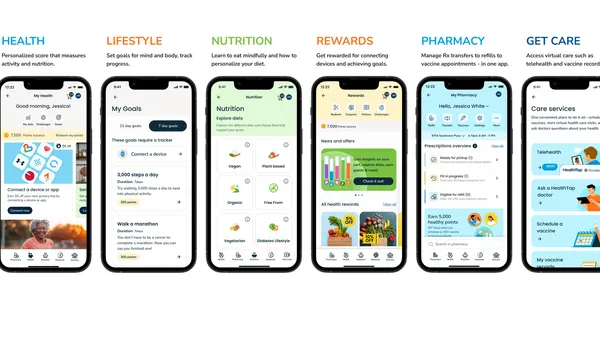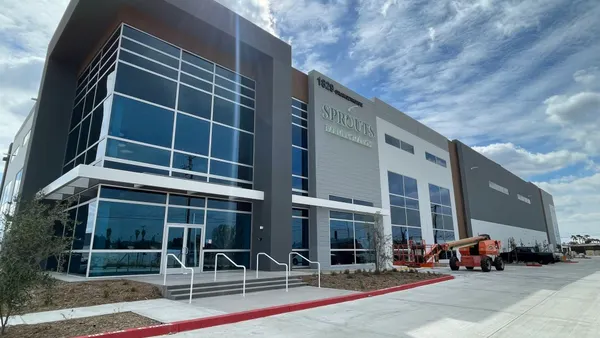As sharing metrics and providing transparency play an increasingly important role in grocers’ Environmental, Social and Governance (ESG) efforts, a new report from Ratio Institute finds food retailers still have work to do when publicly communicating their progress and goals.
Released this week, the report analyzed 82 North American food retailers’ reporting — not performance — on ESG to give an updated overview of how the grocery industry is doing with its ESG reporting.
Ratio Institute used 124 criteria adapted from its own ESG reporting standard to understand the depth and breadth of what the companies shared and then rank them. While ESG reporting varies widely in scope, depth, breadth, format, length and structure, there are some patterns in areas where grocers are doing well with their reporting and where they need to improve, Ratio Institute found.
Here are the highlights of areas grocers are lacking in their ESG reporting and suggestions for how to improve from the firm’s findings.
Consistency, consistency, consistency
Grocers’ reporting on categories fluctuated this year when compared to Ratio Institute’s 2022 analysis, the report found.
While industry-wide average scores for “Food Safety Governance” — Ratio’s classification for reporting that covers food safety violations, recalls, training and toxic-usage disclosures — are nearly the same in 2022 and 2023, 39 companies reported on the category in 2023 compared to 24 in 2022.
More reporting doesn’t mean better information. For example, 10 more companies reported on “Health and Wellness” in 2023 compared to 2022. But that category saw the biggest change among categories, with a 19 percentage point decline in the depth and breadth of reporting compared to Ratio Institute’s analysis in 2022 — a drop the firm said is likely due in part to declining concerns about the pandemic.
Companies can boost reporting in health and wellness by “describing employee well-being initiatives or nutrition guidance for customers, referring to a company policy on banned ingredients or chemicals of concern, and by tying these initiatives into a larger vision, such as a company goal or relevant U.N. Sustainable Development Goals,” per the report.
Grocers also need to be consistent with restating commitments each year — or note when they are complete, no longer material or infeasible for a specific reason — and include data on progress against those commitments, the report found.
While “Source Reduction,” for example, was one of the most in-depth reporting categories, the report noted that grocers analyzed this year made roughly 40% fewer source reduction commitments as compared to Ratio Institute’s analysis in 2022.
“Many companies are reporting on their progress on source reduction but not comparing that progress against an overarching commitment or goal. This makes it difficult for a food retailer’s stakeholders to assess the significance of the progress,” the report noted.
On an individual level, companies’ ESG reporting was often inconsistent and lacked details about goals, commitments and progress is a common deficiency, the report found.
“Consistency is essential to effective reporting,” Ratio Institute said.
Improving reporting hygiene
Consistency alone won’t solve grocers’ ESG reporting woes. They also need to provide adequate data to back up their claims, Ratio Institute noted.
Grocers that tend to have more in-depth, transparent reporting on supply chain-related criteria, for example, also use science-based targets for greenhouse gas goals, report to a global climate and sustainability framework or reference U.N. Sustainable Development Goals, the report noted.
For a “basic level of reporting,” Ratio Institute recommends that grocers:
- Clearly state the current status for a given ESG topic
- State company goals — and related achievement timelines — for that topic
- Describe progress toward goals across multiple reporting periods.
Then, they can add details about methods and processes used to work toward the goals, as well as explain the value brought to stakeholders.
For companies just starting to measure greenhouse gas emissions, Ratio Institute recommends they look at Scope 1 first.
“When a company measures its baseline metrics in various ESG areas, sets clear goals, and consistently tracks and reports on progress toward those goals, it is well-positioned to make the operational changes necessary to improve performance and profits,” the report noted.
While it might seem obvious, Ratio Institute noted that grocers should, when possible, provide a single, comprehensive publicly available report as well as put links in reports to regularly updated ESG datasets.
Food retailers with the highest scores tended to have reports that are longer or link to documents or webpages, Ratio Institute said.
“Companies that do not have the resources to publish costly formal reports still have an opportunity for high-quality reporting in less resource-intensive formats, such as web pages,” the report said.
However, grocers should avoid having multiple documents or webpages dedicated to different ESG areas, the report said. Since the reports are public, the firm reminded grocers to use consumer-friendly language to make their reporting accessible.
Shifting narratives
Grocers are pivoting their ESG reporting focus from talking about COVID-driven operational changes to climate change, Ratio Institute found.
“This trend mirrors a recent shift in media attention from pandemic-related news about company
workforce management to climate change,” the report noted.
All of the publicly traded companies analyzed have said in public filings that climate-related events such as fires, floods and extreme temperatures pose major risks to their business operations, Ratio Institute said. However, only 14 companies — 12 public and two private — of the 82 evaluated have made commitments to limit global warming to 1.5° C, the report noted — indicating there’s more work ahead for food retailers in this area.
Setting science-based targets signals to a public that a company is pledging to make operational changes to limit emissions on a global scale, the report said, adding that retailers can consider greenhouse gas emissions reduction targets aligned with the Paris Agreement goal to limit warming to 1.5°C.












